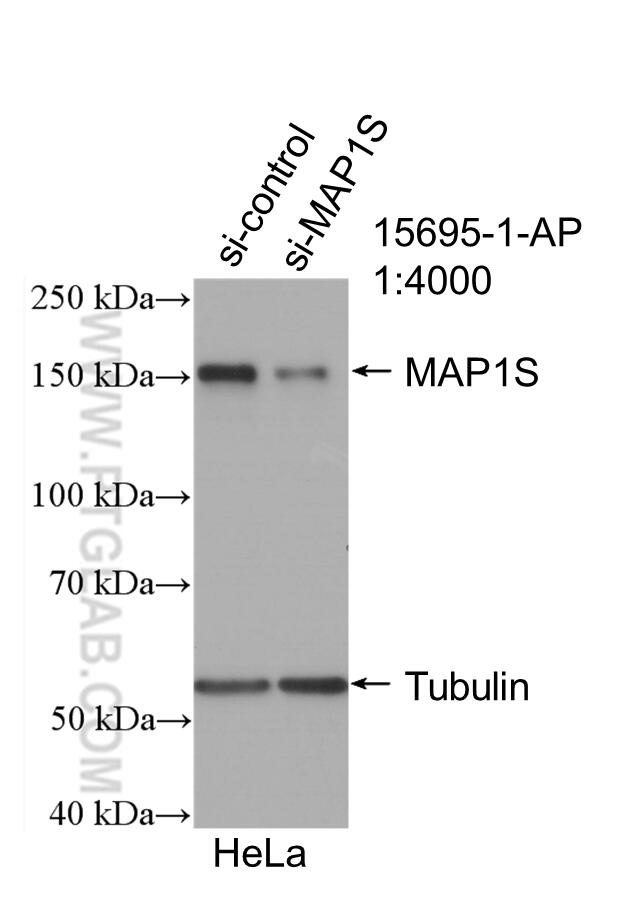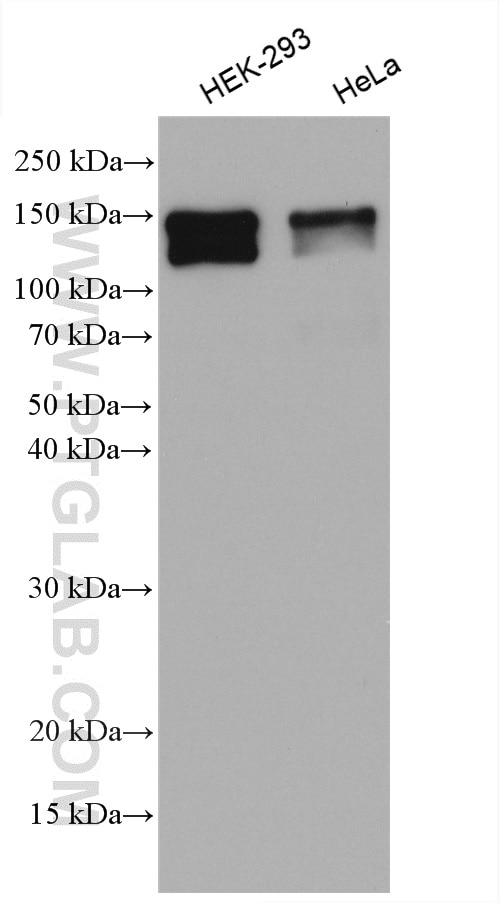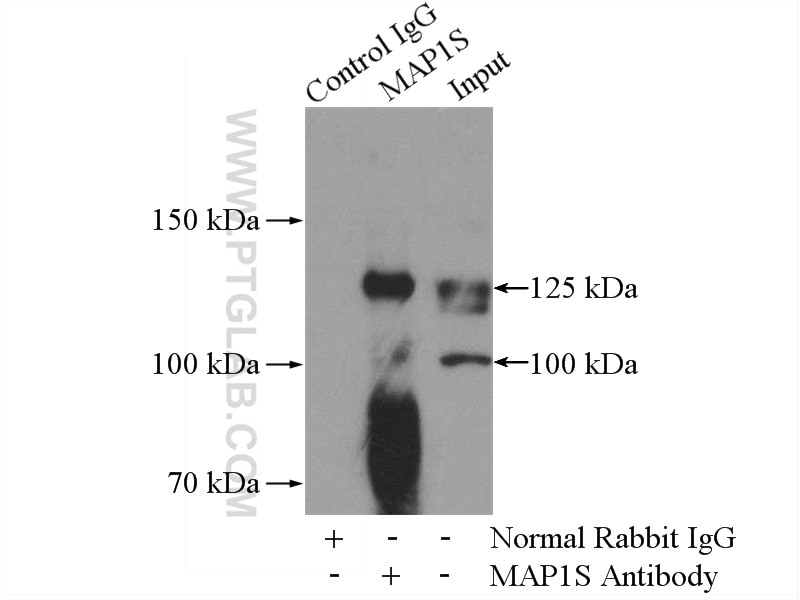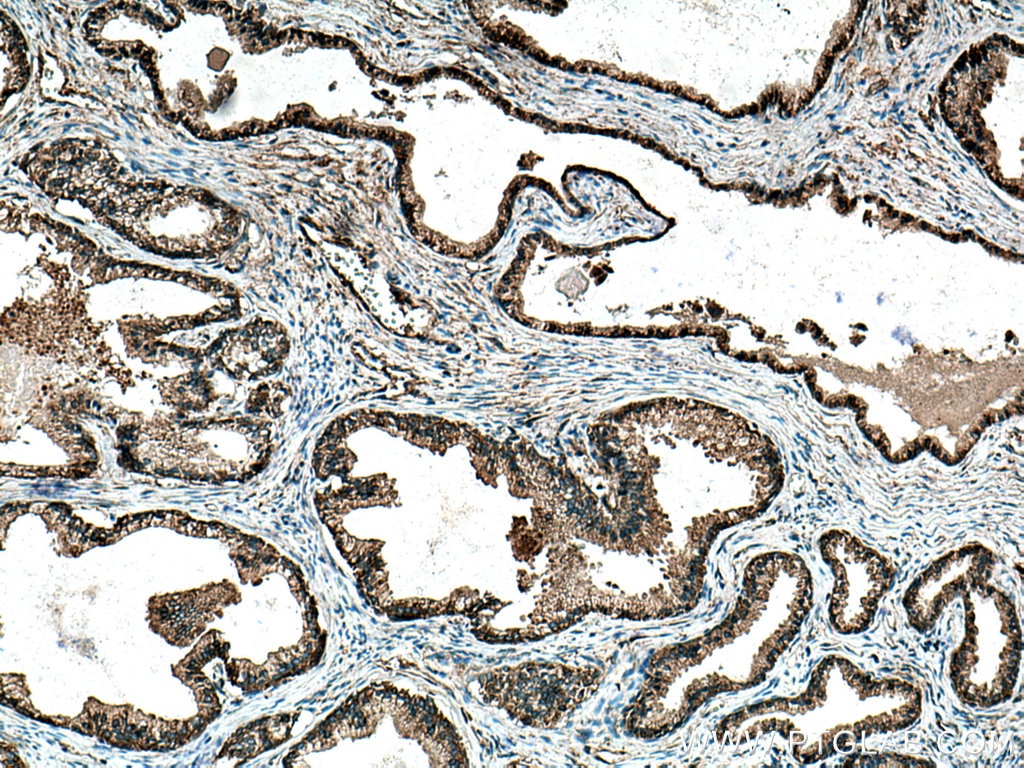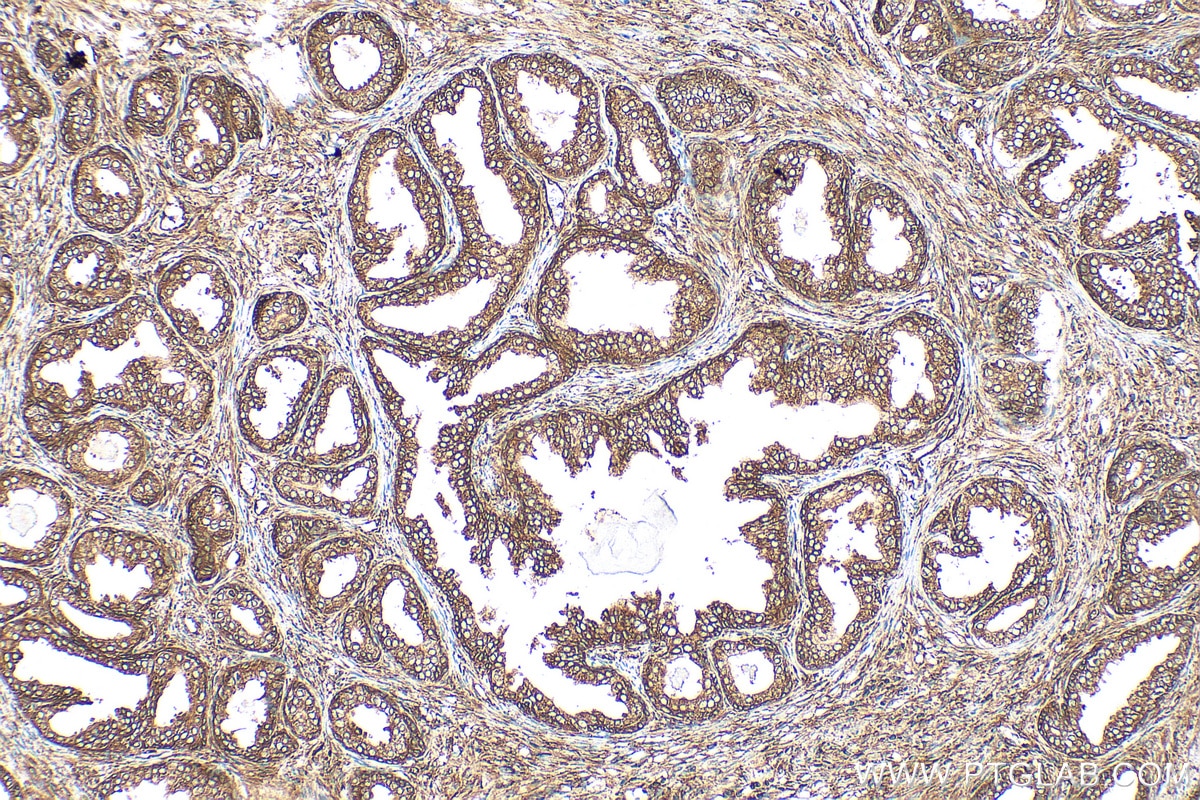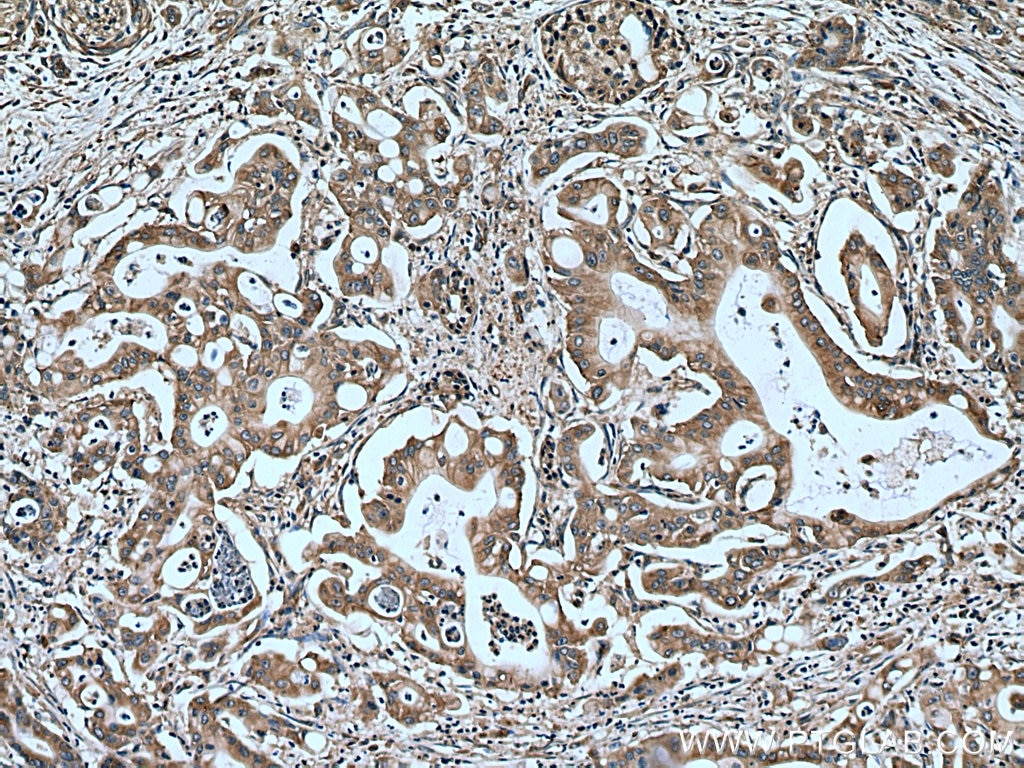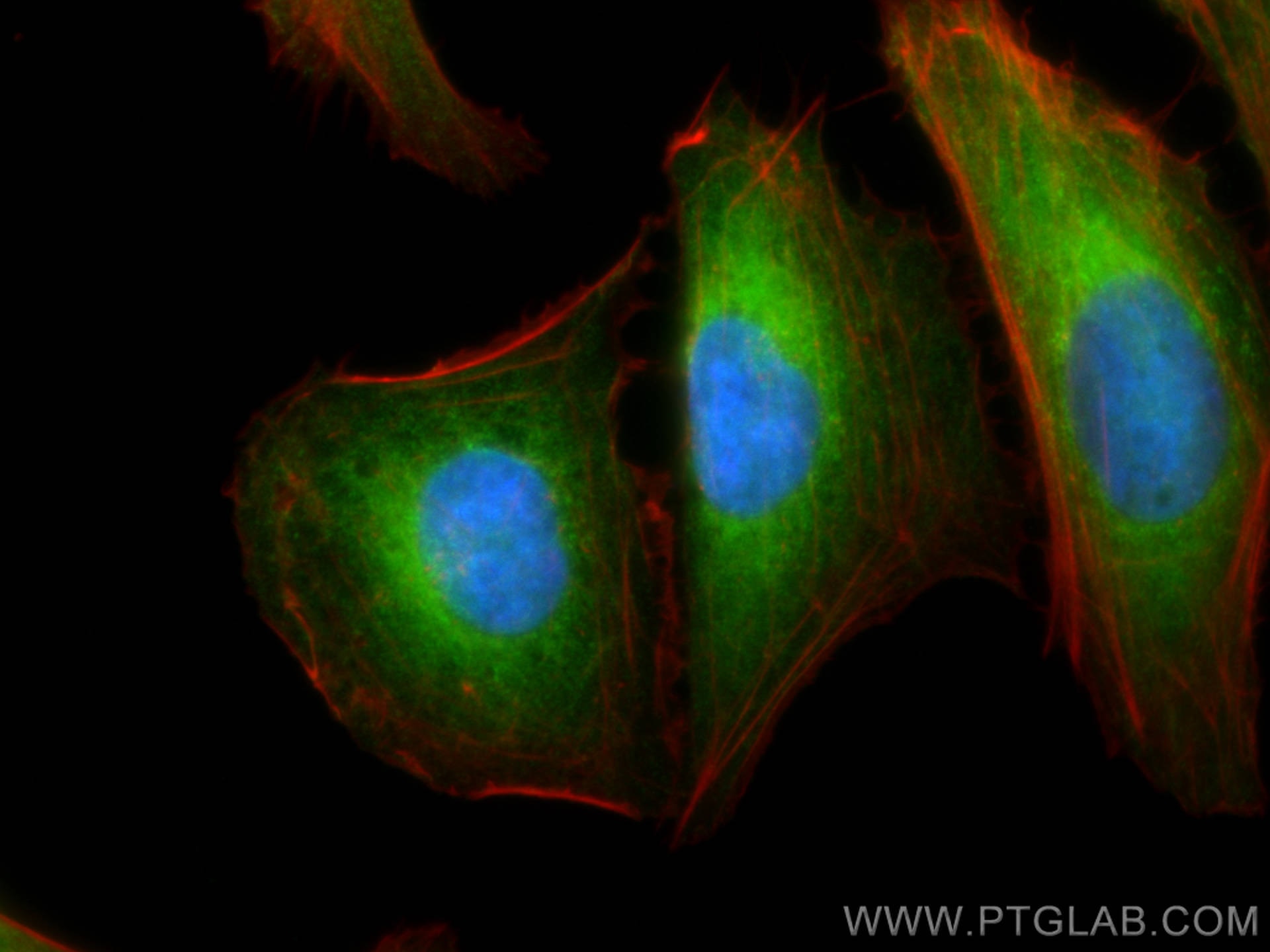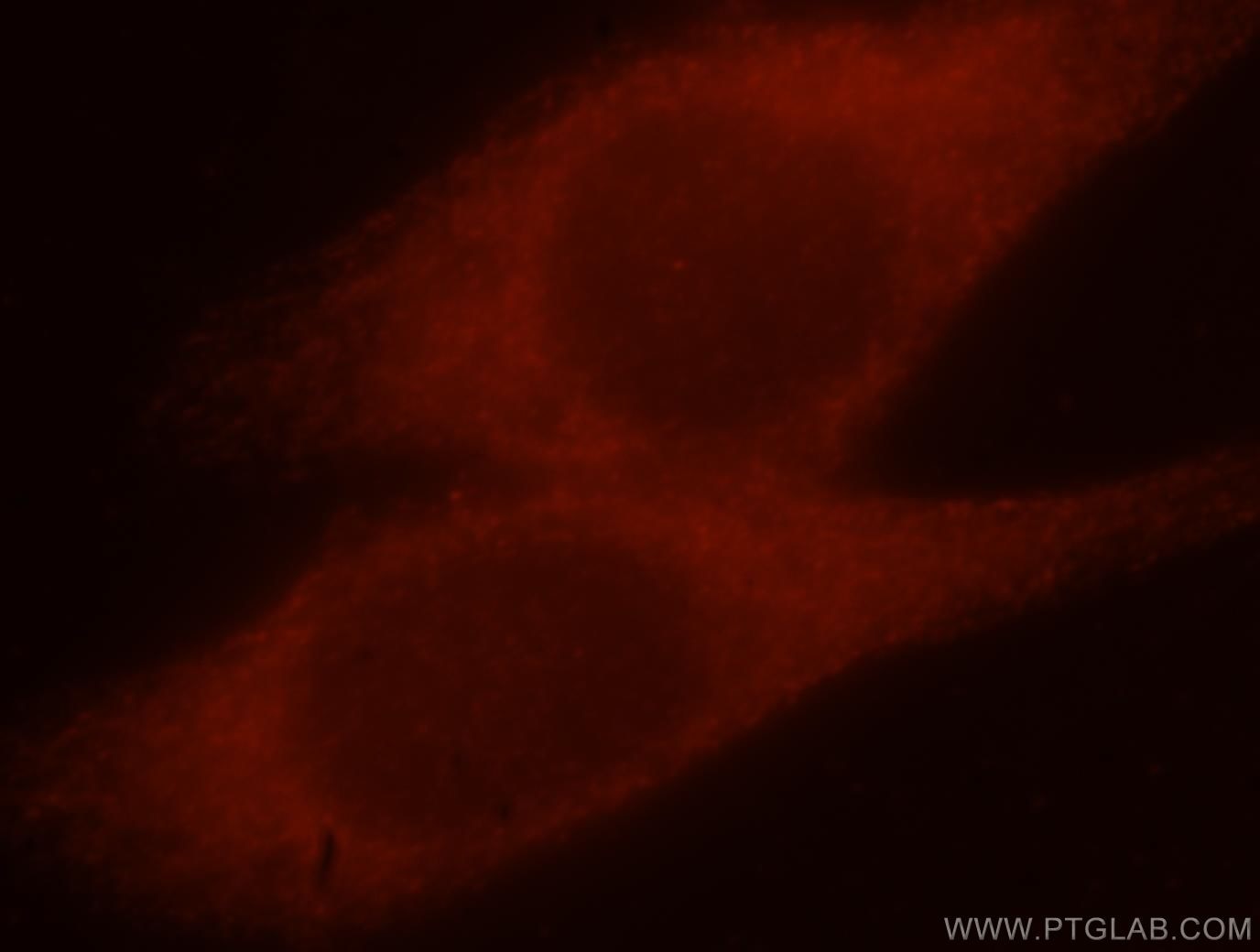- Phare
- Validé par KD/KO
Anticorps Polyclonal de lapin anti-MAP1S
MAP1S Polyclonal Antibody for WB, IP, IF, IHC, ELISA
Hôte / Isotype
Lapin / IgG
Réactivité testée
Humain et plus (1)
Applications
WB, IHC, IF/ICC, IP, ELISA
Conjugaison
Non conjugué
N° de cat : 15695-1-AP
Synonymes
Galerie de données de validation
Applications testées
| Résultats positifs en WB | cellules HeLa, cellules HEK-293 |
| Résultats positifs en IP | cellules SH-SY5Y |
| Résultats positifs en IHC | tissu de cancer de la prostate humain, tissu de cancer du pancréas humain il est suggéré de démasquer l'antigène avec un tampon de TE buffer pH 9.0; (*) À défaut, 'le démasquage de l'antigène peut être 'effectué avec un tampon citrate pH 6,0. |
| Résultats positifs en IF/ICC | cellules U2OS, cellules HeLa |
Dilution recommandée
| Application | Dilution |
|---|---|
| Western Blot (WB) | WB : 1:1000-1:8000 |
| Immunoprécipitation (IP) | IP : 0.5-4.0 ug for 1.0-3.0 mg of total protein lysate |
| Immunohistochimie (IHC) | IHC : 1:200-1:800 |
| Immunofluorescence (IF)/ICC | IF/ICC : 1:200-1:800 |
| It is recommended that this reagent should be titrated in each testing system to obtain optimal results. | |
| Sample-dependent, check data in validation data gallery | |
Applications publiées
| WB | See 4 publications below |
| IF | See 1 publications below |
| IP | See 1 publications below |
Informations sur le produit
15695-1-AP cible MAP1S dans les applications de WB, IHC, IF/ICC, IP, ELISA et montre une réactivité avec des échantillons Humain
| Réactivité | Humain |
| Réactivité citée | Humain, souris |
| Hôte / Isotype | Lapin / IgG |
| Clonalité | Polyclonal |
| Type | Anticorps |
| Immunogène | MAP1S Protéine recombinante Ag8315 |
| Nom complet | microtubule-associated protein 1S |
| Masse moléculaire calculée | 806 aa, 85 kDa |
| Poids moléculaire observé | 130-150 kDa |
| Numéro d’acquisition GenBank | BC008806 |
| Symbole du gène | MAP1S |
| Identification du gène (NCBI) | 55201 |
| Conjugaison | Non conjugué |
| Forme | Liquide |
| Méthode de purification | Purification par affinité contre l'antigène |
| Tampon de stockage | PBS avec azoture de sodium à 0,02 % et glycérol à 50 % pH 7,3 |
| Conditions de stockage | Stocker à -20°C. Stable pendant un an après l'expédition. L'aliquotage n'est pas nécessaire pour le stockage à -20oC Les 20ul contiennent 0,1% de BSA. |
Informations générales
MAP1S (also known as C19ORF5 or VCY2IP1) is a novel member of the microtubule-associated protein 1 family and a homologue of the exclusively neuronal distributed microtubule-associated protein 1A and 1B (MAP1A/B). In contrast to MAP1A and MAP1B, MAP1S is expressed in a wide range of tissues in addition to neurons. MAP1S is synthesized as a precursor protein that is partially cleaved into heavy and light chains in a tissue-specific manner. In addition, a short chain isoform may be induced under prolonged mitotic arrest or inhibition of the 26S proteasome. Recently it has been reported that the short chain isoform associates with mitochondria in addition to microtubules and causes irreversible aggregation of dysfunctional mitochondria resulting in cell death. Western blot analysis in human brain using this antibody detected two main bands between 100-130 kDa corresponding to heavy and light chains of MAP1S.
Protocole
| Product Specific Protocols | |
|---|---|
| WB protocol for MAP1S antibody 15695-1-AP | Download protocol |
| IHC protocol for MAP1S antibody 15695-1-AP | Download protocol |
| IF protocol for MAP1S antibody 15695-1-AP | Download protocol |
| IP protocol for MAP1S antibody 15695-1-AP | Download protocol |
| Standard Protocols | |
|---|---|
| Click here to view our Standard Protocols |
Publications
| Species | Application | Title |
|---|---|---|
Cell Res Regulators of tubulin polyglutamylation control nuclear shape and cilium disassembly by balancing microtubule and actin assembly. | ||
EMBO Rep MAP1B-LC1 prevents autophagosome formation by linking syntaxin 17 to microtubules. | ||
Cell Cycle Depletion of JMJD5 sensitizes tumor cells to microtubule-destabilizing agents by altering microtubule stability. | ||
Front Synaptic Neurosci Proteomic Analysis of Dendritic Filopodia-Rich Fraction Isolated by Telencephalin and Vitronectin Interaction. | ||
Biochim Biophys Acta Mol Cell Res Cryptic splicing events result in unexpected protein products from calpain-10 (CAPN10) cDNA |
